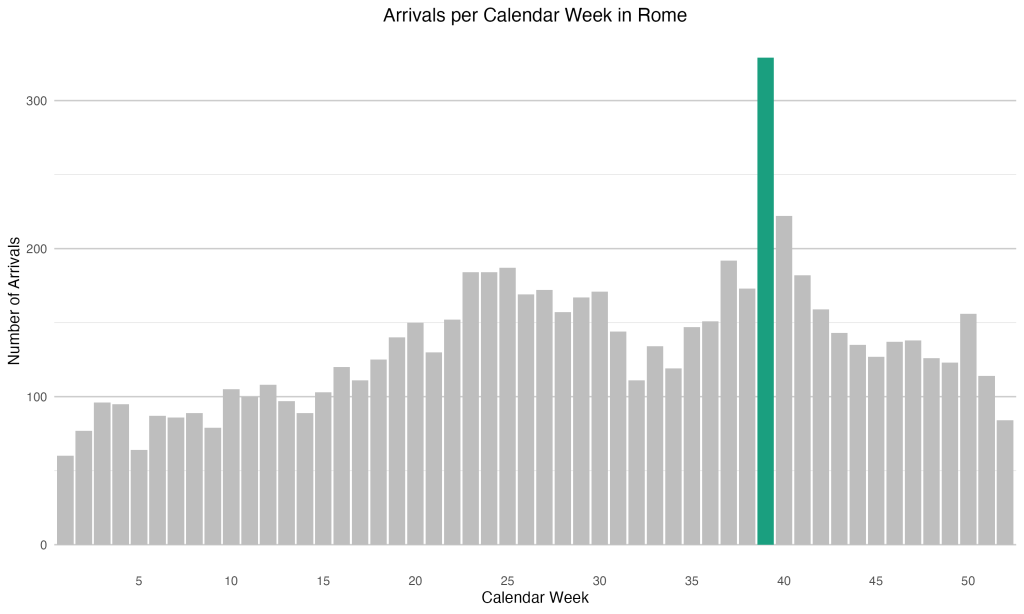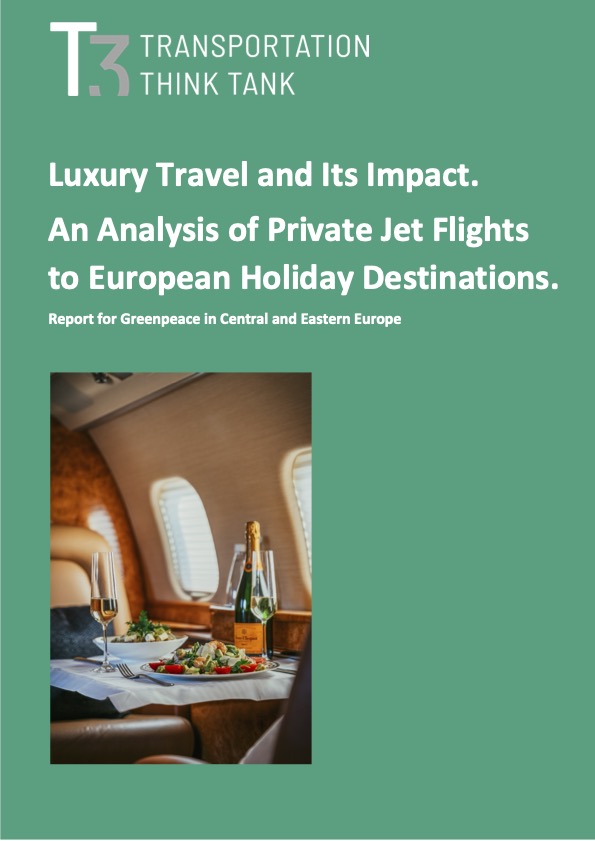We have prepared an analysis of private jet arrivals at European holiday destinations. The study was commissioned by Greenpeace in Central & Eastern Europe. It analyses, how private jet use varies over the course of a year and whether peaks are visible that can be attributed to leisure travel. It examines flight data to 45 airports in cities/regions that are well known as holiday destinations and that are promoted and offered as such by luxury tour operators and private jet companies.
The result of our analysis in short: Seasonality of these private jet arrivals (also known as “business aviation”) is pretty similar to standard tourism. What is so special about it? Because it’s nothing special. It’s just a flight from origin to destination. But there are two important differences: Firstly, the passengers pay a lot of money for a lot of luxury. Most importantly, they get to choose the airport (including many small, regional airfields) and the time of departure. Check-in will be quick and convenient, and they may want the plane for the trip to themselves. The price may be around 10,000 Euro for a one-way trip. This luxury travel, secondly, comes at the cost of (even) higher carbon emissions.
The impact, the cost
According to our analysis, an average private jet flight to one of our selected holiday destinations emits 4.46 tons of CO2. This is equivalent to driving a private car for three years, assuming an average European annual mileage of 12,540 km and a fuel consumption of 5 litres of petrol per 100 km. There is a national circulation tax for cars, and fleet emission standards, amongst other instruments. The price for the petrol typically includes energy and/or carbon taxes, and value added tax (VAT). So the car is well regulated, even though we can argue that the regulations should be stricter.
But this is not the case with business aviation. Nations are called upon to combat the climate crisis, but taxation schemes favor carbon emissions by plane. How many of the above-mentioned trips could a rich person make per year? It is probably not a matter of money. Or even if it is, then there should be some taxation payable, such as petroleum tax, VAT or any other energy tax for refueling kerosene for international flights. Private aircraft operators with total CO2 emissions lower than 1,000 tons per year are even exempted from the European Emissions Trading Scheme. That is 224 free flights for your own private jet, so to speak, if you consider 4.46 tons of CO2 per flight.
Our dataset includes 117,965 private jet arrivals in the year 2023 at one of the 45 European holiday destinations. The corresponding CO2 emissions were as high as 526,071 tons. These flights exclude jets used for special missions (e.g., medical, offshore, or police). It is likely that the purpose of these flights was, in many cases, purely touristic.
Empty legs
Empty legs are an example of how the lack of regulation is causing excessive usage of private jets. An empty leg flight occurs when a private jet is chartered to a specific location and doesn’t have any passengers for its return flight. The plane is repositioned, that is, it flies to another airport from which the next flight is booked. In our dataset from 2023, we found 68 flights from the city of Annemasse to the city of Geneva, which is 13 km as the crow flies. Annemasse is part of the Geneva conurbation, it is essentially cycling distance. These flights were probably repositioning flights: Someone booked a flight from Geneva, the next availabe jet was located in Annemasse. So the passenger(s) could have taken off from Annemasse and omitted a stopover at Geneva airport. They were probably unaware that their plane had been diverted from Annemasse.
All this is to say that we urgently need to regulate private jet usage. Any pricing mechanism can be defended from a social justice perspective. Scientists call trends in aviation specifically worrying and propose emission reduction efforts to shift from nations to individuals, as flight emissions are very unequally distributed.
Single events
Our dataset includes some interesting side stories, namely weeks with significant arrival peaks. The most obvious outlier is week 39 in Rome (24 to 30 September 2023). Arrivals of private jets in Rome rarely exceed 150 per week, but during this week, 329 private jets landed (see figure below, green bar). According to our own desk research, the only plausible reason we could find was Christian events, namely an evening prayer on 30 September, and a session of the Synod of Bishops in early October 2023.




